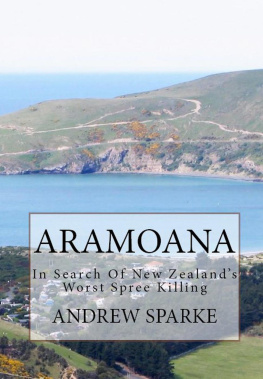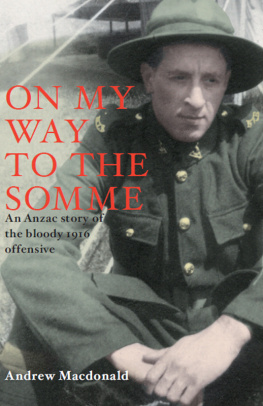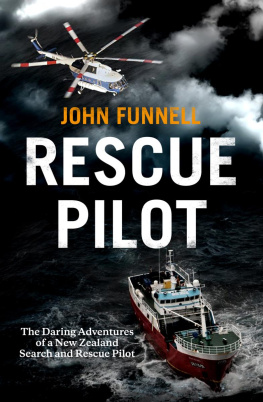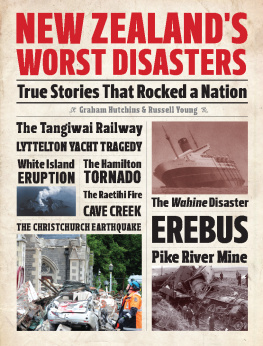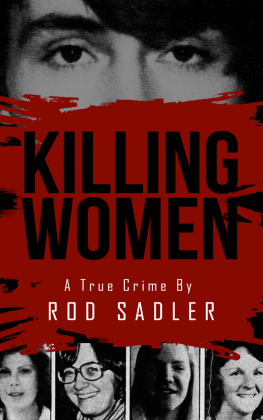ARAMOANA
In Search Of New Zealands Worst Spree Killing
Andrew Sparke

Aramoana: In Search Of New Zealands Worst Spree Killing
Copyright 2019 APS Publications
Earlier edition published 2017
All rights reserved.
The moral right of the author has been asserted.
No part of this publication may be reproduced, stored in or introduced into a retrieval system, or transmitted, in any form, or by any means (electronic, mechanical, photocopying, recording or otherwise) without the written permission of the publisher except that brief selections may be quoted or copied without permission, provided that full credit is given.
Cover image courtesy of Benchill in Public Domain
Seals photograph courtesy of Pseudopanax in Public Domain
Norinco Rifle photograph by Dhalikar CC-BY-SA-3.0
All other photographs public domain
APS Publications, 4 Oakleigh Road, Stourbridge,
West Midlands, DY8 2JX
www.andrewsparke.com
I ntroduction
Where and Why
Law and Policy In New Zealand
Crib Culture
A Man Named Gray
Grays Armoury
The Nature of Schizophrenia
Tuesday 13th November 1990
Wednesday 14th November 1990
Aftermath
Casualties
Awards and Commendations
London Gazette Citation
Further Material
INTRODUCTION
The unenviable record of being New Zealands worst ever spree killing was held by the Aramoana massacre of 1990 for 29 years, until 15th of March 2019 when Brenton Tarrant entered and re-entered two mosques in Christchurch, killing fifty men, women and children, and wounding many more. In the interim it appeared little had been learned about the necessity for tightened gun control in respect of military style weapons.
This is the story of what such weapons can do in the hands of a mentally ill man.
A ramoana is a very long way from anywhere. To start with its on the other side of the world. On New Zealand's South Island. But even from Christchurch or Dunedin, it's not exactly accessible. Driving down through Omaru, heading south, you have to find a little side road before you get to Port Chalmers and follow it as it becomes a single-track lane with passing places, winding along the coast. Until the coast just stops.
At this point there's a small settlement of cribs. These are little houses with only two habitable rooms for which no planning permission used to be necessary. Intended for occasional occupation, for holidays and weekends, some are nevertheless lived in all year round.
Aramoana was established by the Otago Harbour Board in the 1880s as a pilot station for navigation around the mouth of the Otago Harbour into Port Chalmers and a small farming village grew up around it. Much later, In the 1950s it became a popular beach resort in the summer months.
The summer season apart, it's a strange and lonely place to live. Cut off from all the normal aspects of civilisation such as a shop or a mobile phone signal. Fog-bound periodically. Subject to extremes of weather, for most people it isnt anything like a place to choose to live once the summers over..
Apart from a wonderful beach, Aramoana possesses one other outstanding geographical feature. And that is man-made.
The Mole is a man-made spit designed to narrow the deep-water channel used by shipping to access Port Chalmers. Narrowing the harbour channel increased the waters tidal velocity, helping to scour out sand deposits and carry them further out to sea. The first of many massive wooden piles was driven on September 22, 1884 by labourers working amid the breaking seas. Locally quarried rock was then ferried along a specially built miniature railway track and tipped in between the wooden structure which was raised above the high-water mark at the shore end but had a planned fall to fifteen feet below low water at the seaward end. In fact, the mole wasnt completed as planned, stopping some two thirds of a mile out from the beach instead of continuing to the planned length of over a mile.
In 1924 the mole was damaged by fire and the decision was made to reinforce it by sinking two ships, the SS Moana and the SS Paloma, alongside it.
Even incomplete the Mole is a defining feature of Aramoana. It is a few yards wide and mere feet above sea level and its over two thirds of a mile long. Walking on it is an unsettling experience. The sea is on both sides. And not just shallows but real depths, from which persistent visitors may find themselves observing Orcas, Killer Whales, hunting the denizens of the seal colony at the tip of the Mole. Some report sightings of rarer predators such as the Great White Shark. And the seals themselves bask on the Mole at will so you have to walk round them. And there is fish and bird life in abundance too, an eco-system in which human beings are almost completely irrelevant. No wonder walking out into the ocean on the Mole, in sunshine or enshrouded in fog, is so unsettling an experience that once experienced it can never be forgotten.

A ramoana is unfortunately known, if it is known at all, for something else the country is not keen to have better recognised. It is the scene of New Zealand's worst ever mass murder of modern times. Even those who have written extensively about the spree killers of America. Britain and Australia, like my friend Pan Pantziarkis in his book Lone Wolf , don't seem to be particularly aware of what happened at Aramoana on 13th November 1990.
And yet the casualty list parallels that achieved by such household names in the study of firearms abuse as Michael Ryan in Hungerford in 1987, Thomas Hamilton in Dunblane, Scotland in 1996, Martin Bryant in Port Arthur, Australia in 1996, Raoul Moat in Cleveland in 2010 or numerous American examples from Charles Whitman in 1964 to the present day. The only recent example of spree killing on a significantly bigger scale is Anders Breivik in Norway in 2011.

Seals lying on The Mole at Aramoana
T he two books written about the Aramoana massacre are both out of print. And it all happened, as I said at the beginning, on the other side of the world. But since the place and its recent history are so little known, the subject seems worth a little exposition.
Next page
